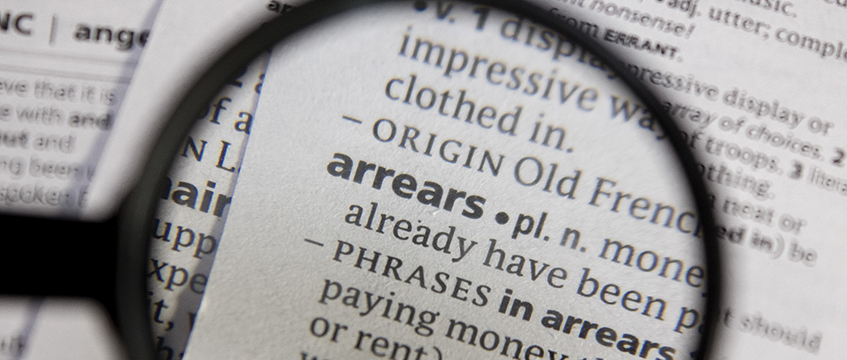A range of options are available to landlords seeking to recover rent arrears – not least pursuing former tenants and guarantors. Joe Perry explains why landlords should not shy away from exploring this option.
Landlords should carefully consider all of the options available to them when faced with rent arrears. In addition to direct action, such as a debt claim, forfeiture or statutory demand, landlords should seriously consider using another powerful tool in their arsenal – recovering arrears from third parties, such as guarantors, former tenants and former guarantors. A landlord should not be shy in pursuing the “debtor once removed”, particularly given that such parties have specifically agreed to step in to cover the tenant’s liability.
Pursuing an existing guarantor
If there is an existing guarantor, a landlord should carefully check the terms of the guarantee to see if the liability under the agreement has been triggered. Many guarantees will be contingent on the landlord having formally demanded the money from the tenant and having taken prescribed actions, such as serving notices.
Relying on an existing guarantee will often be cheaper and less time-consuming than pursuing a tenant for the arrears, particularly if the tenant is suffering financially.
Pursuing a former tenant or guarantor
If there is no existing guarantee, or the guarantee has not been triggered, a landlord might consider pursuing a former tenant or their guarantor for the arrears instead.
If a lease is an old lease – ie, one that was granted before 1 January 1996 – a landlord can recover arrears from the original tenant, any former tenant or any former guarantor that has covenanted to be liable for the rest of the term. By contrast, if the lease is a new lease, being one that was granted after 1 January 1996, a landlord can only seek to recover arrears from a previous tenant if it entered into an authorised guarantee agreement; or from a guarantor who guaranteed the former tenant’s performance under a guarantor’s authorised guarantee agreement.
Pursuant to the Landlord and Tenant (Covenants) Act 1995, to recover arrears from these parties a landlord is required to serve a section 17 notice in the prescribed form, detailing the sums due. A landlord will need to take swift action, as the section 17 notice needs to be served within six months of the arrears becoming due. In practice this can lead to a cascade of notices needing to be served every few months until the arrears position is regularised.
One point to bear in mind is that a former tenant or guarantor that pays the arrears detailed in the section 17 notice will then be entitled to an overriding lease. This lease sandwiches itself between the interests of the non-paying tenant and the landlord, pushing the non-paying tenant down to the category of a subtenant. This in turn gives the former tenant or guarantor the right to pursue the non-paying tenant directly for the arrears – whether or not they are ever reimbursed is another matter. Because of this mechanism, it is important for a landlord serving a section 17 notice to consider if it would be happy to have the guarantor or former tenant as a direct tenant under the new overriding lease. If they are able to pay and the current tenant is not, then potentially so, but the position in reality is not always so straightforward.
Has Covid affected a landlord’s ability to recover arrears from third parties?
The pandemic led to wide-ranging restrictions being imposed on landlords when seeking to recover rent arrears, ranging from a suspension on forfeiture to a ban on statutory demands being presented for winding-up petitions. In contrast, no restrictions were introduced to prevent landlords from recovering arrears from existing guarantors, former tenants or former guarantors. The ability to lean on third parties for payment of arrears was an important one for landlords during that time.
More recently, the Commercial Rent (Coronavirus) Act 2022 introduced an arbitration scheme to deal with arrears accrued from 21 March 2020 until the date that the Covid restrictions affecting the relevant tenant business ended. If a landlord and tenant are unable to agree repayment between themselves, these so-called protected rent debts are required to be settled through the arbitration scheme. Other enforcement options are also restricted while the window for referrals remains open.
In comparison with the position during the pandemic, the arbitration scheme appears to be much more favourable for guarantors and former tenants. If rent is ultimately to be paid by a guarantor or former tenant after an arbitration award is made offering relief from payment, the award affects their liability too. They are not liable to pay any amount written off by the award, nor to pay an amount payable under the award until it becomes due.
On one hand, this seems fair. The guarantor will invariably have agreed to cover the tenant’s liability under the lease before the pandemic hit, and so the circumstances in which it would be liable to pay the arrears were wholly unforeseen. On the other, these unforeseen circumstances are exactly the reason that the guarantor was put in place – to step in when the tenant was unable to pay. Is it right that a guarantor should be released from its obligations just because the tenant is also unable to pay those same amounts?
Many will be looking to the awards that start being released from the arbitration scheme to see the true extent to which third parties, such as guarantors, are taken into account.
Joe Perry is an associate at Ashurst








